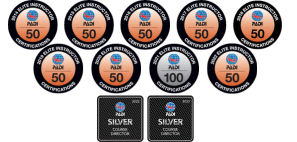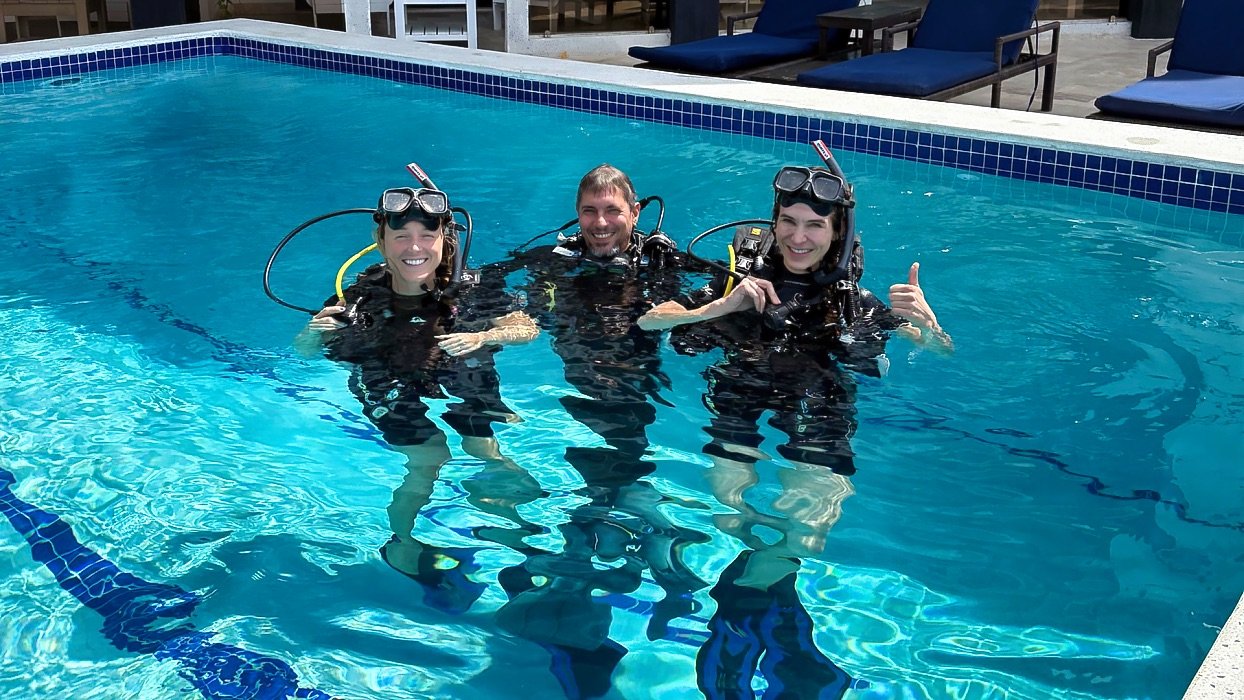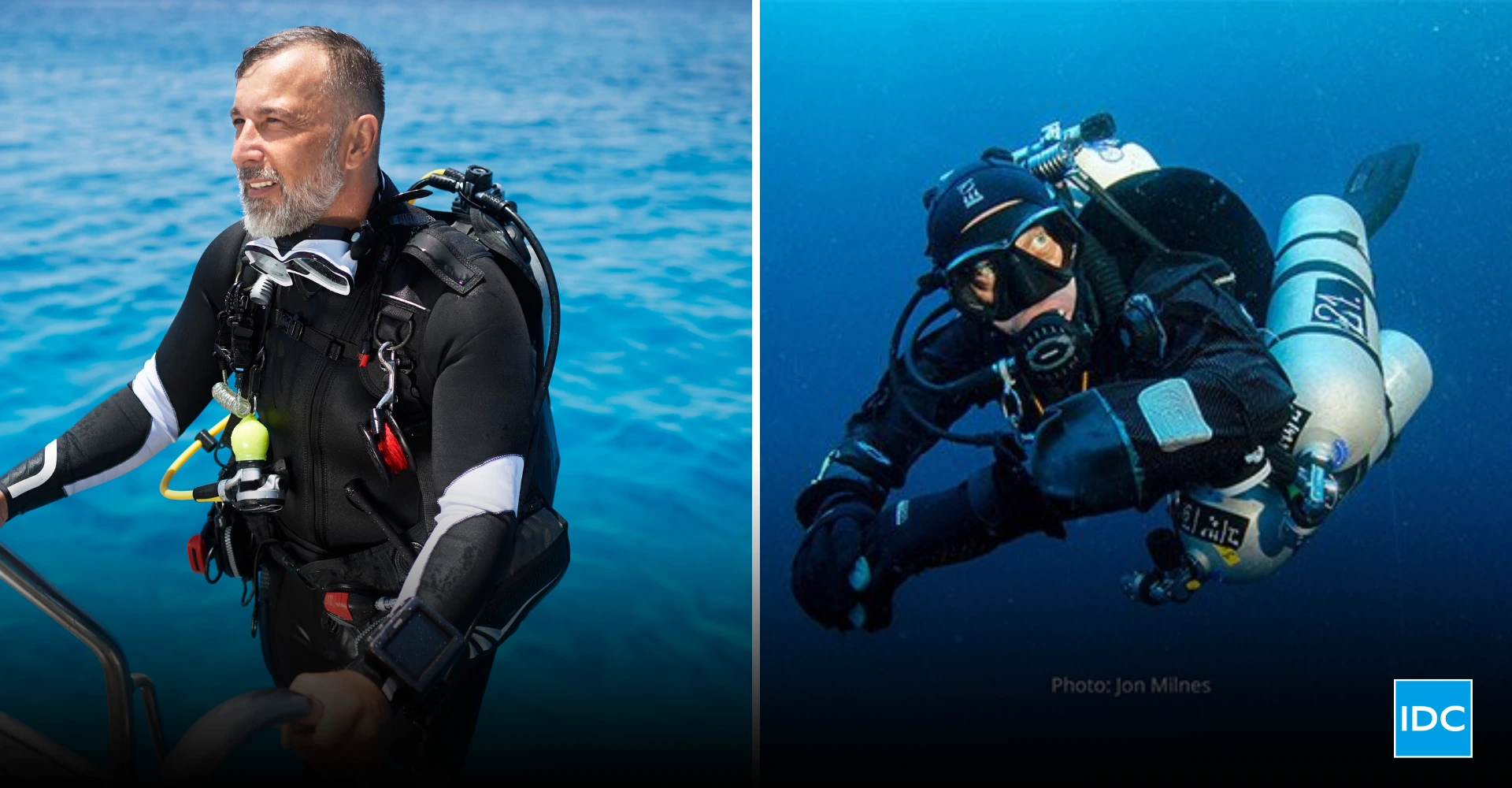
Every diver reaches a point when recreational diving limits start to feel restrictive. That first time 40 meters (130 feet) isn’t enough, or when a dive ends long before your curiosity does, is when many divers begin searching for the first steps for technical diving training. I remember feeling that same pull years ago, staring at a wreck disappearing into the blue, knowing there was more to explore but not enough gas or time to do it safely. That’s when I realized recreational training wasn’t enough. Technical diving isn’t just about going deeper, it’s about going smarter, with planning, precision, and a mindset that embraces full responsibility.
The Call Beyond Recreational Limits
Recreational diving is designed to keep us within safe limits, but those limits eventually feel tight. Depth restrictions, no-decompression times, and gas limits can all cut dives short just as the adventure is getting good. Many divers start to wonder about the differences between recreational and technical diving when their curiosity pushes them toward deeper wrecks, extended bottom times, or overhead environments like caves. I went through this same process, questioning whether I wanted to stay within the boundaries of recreational training or pursue more freedom through advanced techniques. That curiosity is the very first step toward technical diving training.
For a clear overview of where these two paths split, I often recommend reading PADI’s guide on what’s the difference between technical diving and recreational diving. It highlights why the leap isn’t just about gear, but about training and mindset.
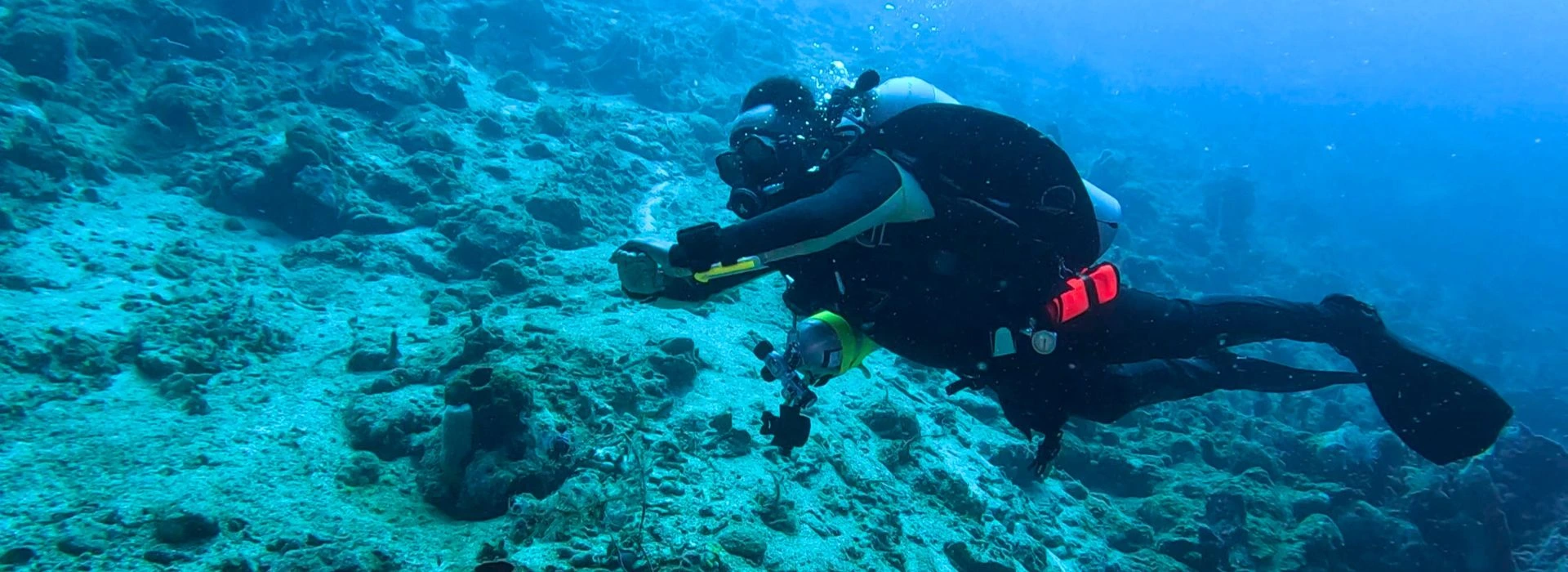
The Technical Diving Mindset
Starting your first steps for technical diving training requires a shift in mindset. Technical divers rely on patience, preparation, and the ability to stay calm when problems arise. Unlike recreational dives, where contingencies are simpler, tec dives demand you anticipate multiple scenarios and take responsibility under pressure.
When I mentor divers who are considering this path, I emphasize that equipment or gas mixtures alone won’t make them tec divers. It’s the dive planning discipline, the willingness to accept responsibility, and the mental toughness to manage stress at depth that separate a curious recreational diver from a confident technical one.
Planning Like a Pro
One of the most important first steps for technical diving training is mastering dive planning. Gas management in technical diving isn’t just about tracking consumption, it’s about building contingencies for lost gas, extended decompression, and unexpected issues. Every dive plan must be exact, and every diver on the team needs to know it by heart.
I still remember my first structured tec dive, when my instructor drilled me on bailout scenarios. It wasn’t about swimming skill or comfort, it was about the discipline of sticking to the plan. That’s why courses like the PADI Tec 40 course are often the right first step, providing a safe environment to learn planning, gas calculations, and discipline.
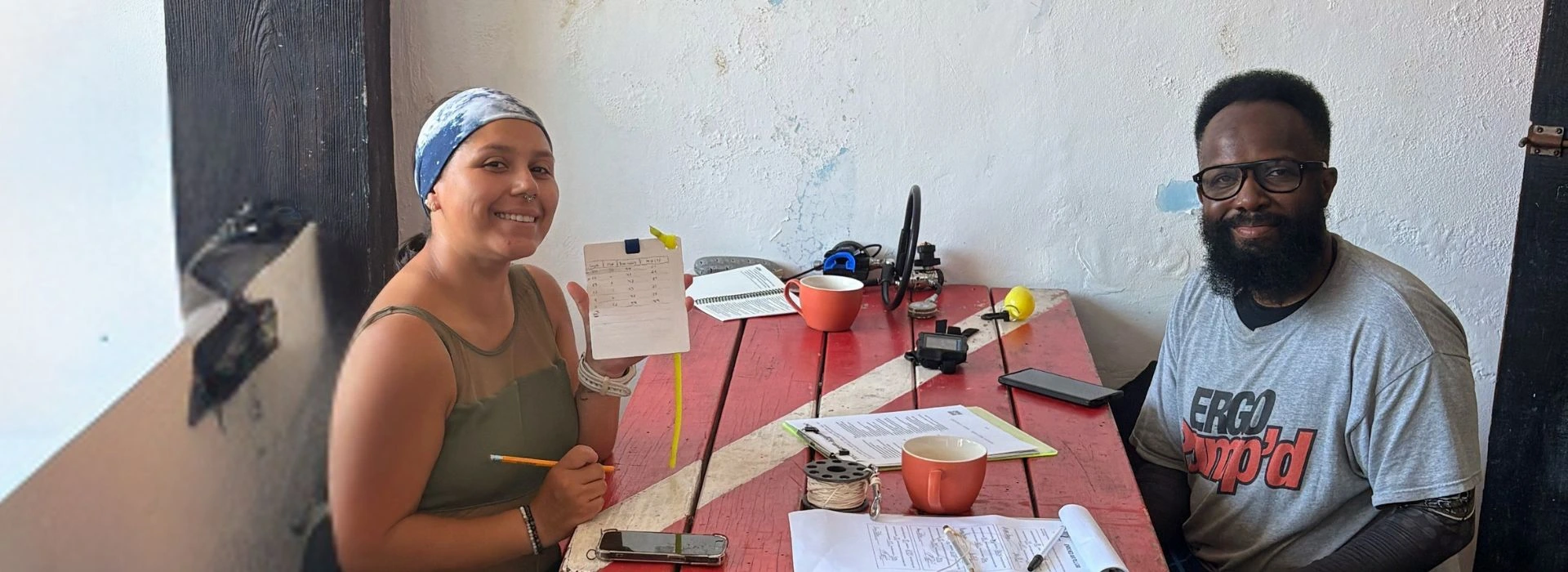
Gear as a Tool, Not a Solution
Another key lesson in the first steps for technical diving training is understanding your relationship with gear. Tec divers use twinsets, stage bottles, sidemount systems, and multiple computers, but this doesn’t make them competent on its own. Gear supports skills, it never replaces them.
When I teach sidemount or twinset configuration, I focus on why it’s being used, not just how. This philosophy keeps divers grounded, reminding them that equipment is only valuable when paired with skill and discipline.
The Rewards at Depth
So why commit to all this preparation? Because the tec diving rewards are like nothing else. Access to deeper wrecks, the serenity of extended decompression dives, and the mystery of unexplored cave systems all open up once you’ve taken those first steps for technical diving training. Some of my most memorable dives have come after hours of planning, leading to just minutes of awe at depth.
For divers who are ready to move forward, the PADI Tec 45 course builds confidence for deeper dives with staged decompression. From there, each level of training unlocks new possibilities beneath the surface.
Final Thoughts
Starting your first steps for technical diving training is not for everyone, but for those who feel the call beyond recreational limits, it can be life-changing. It’s not just about going deeper or longer, it’s about becoming the kind of diver who thrives under pressure, values preparation, and embraces the rewards of unexplored territory.
I’d love to hear from you—are you curious about starting tec training, or have you already taken your first steps? Share your questions and experiences in the comments below.
Dive Deeper: Are You Ready for Your First Steps into Technical Diving?
1. What often sparks a diver’s curiosity toward technical diving?
2. What is the most important shift needed when starting technical diving?
3. In technical diving, gas management is primarily about:
4. Why is gear not the ultimate solution in technical diving?
5. What is one of the main rewards of technical diving?

